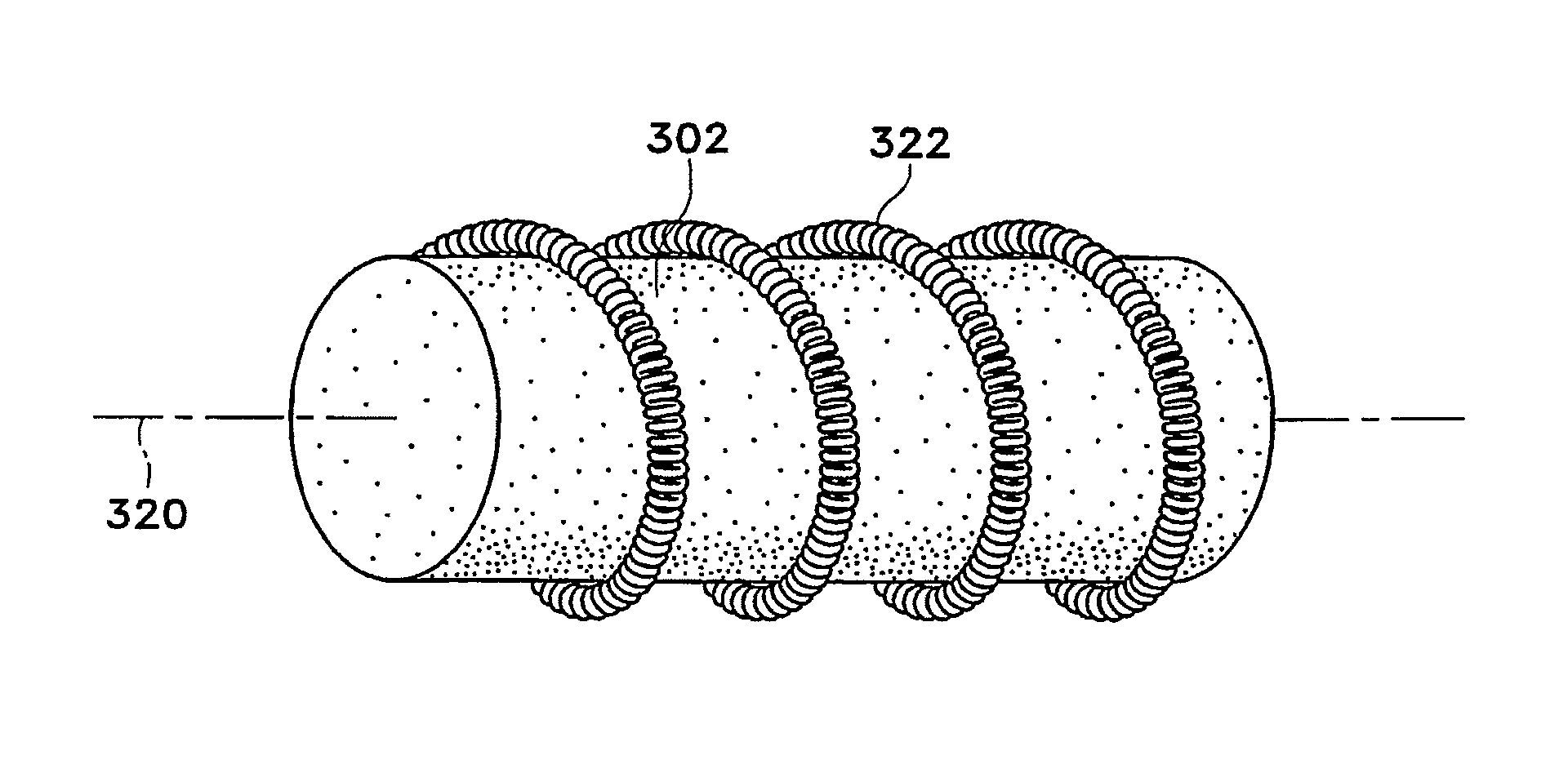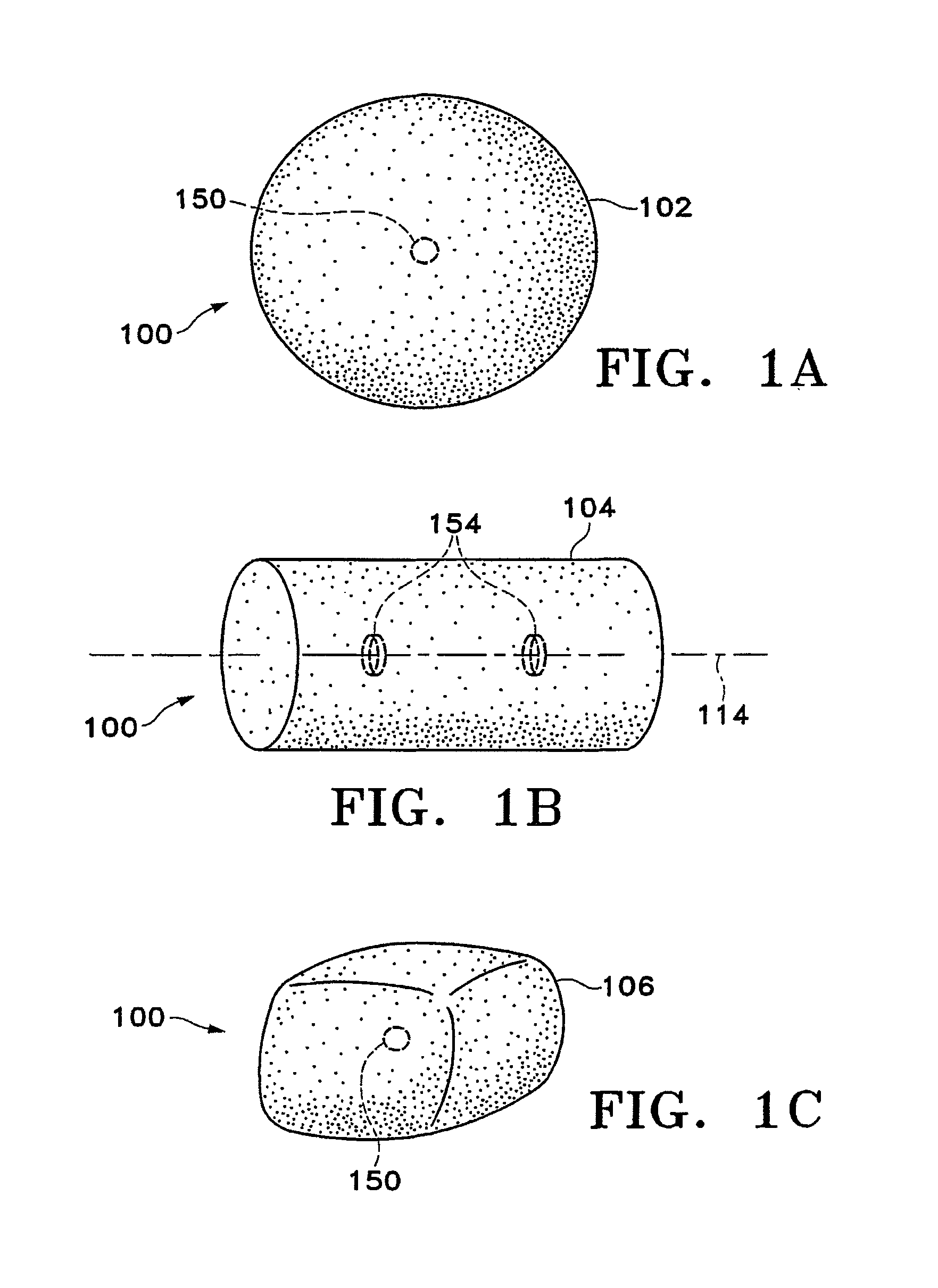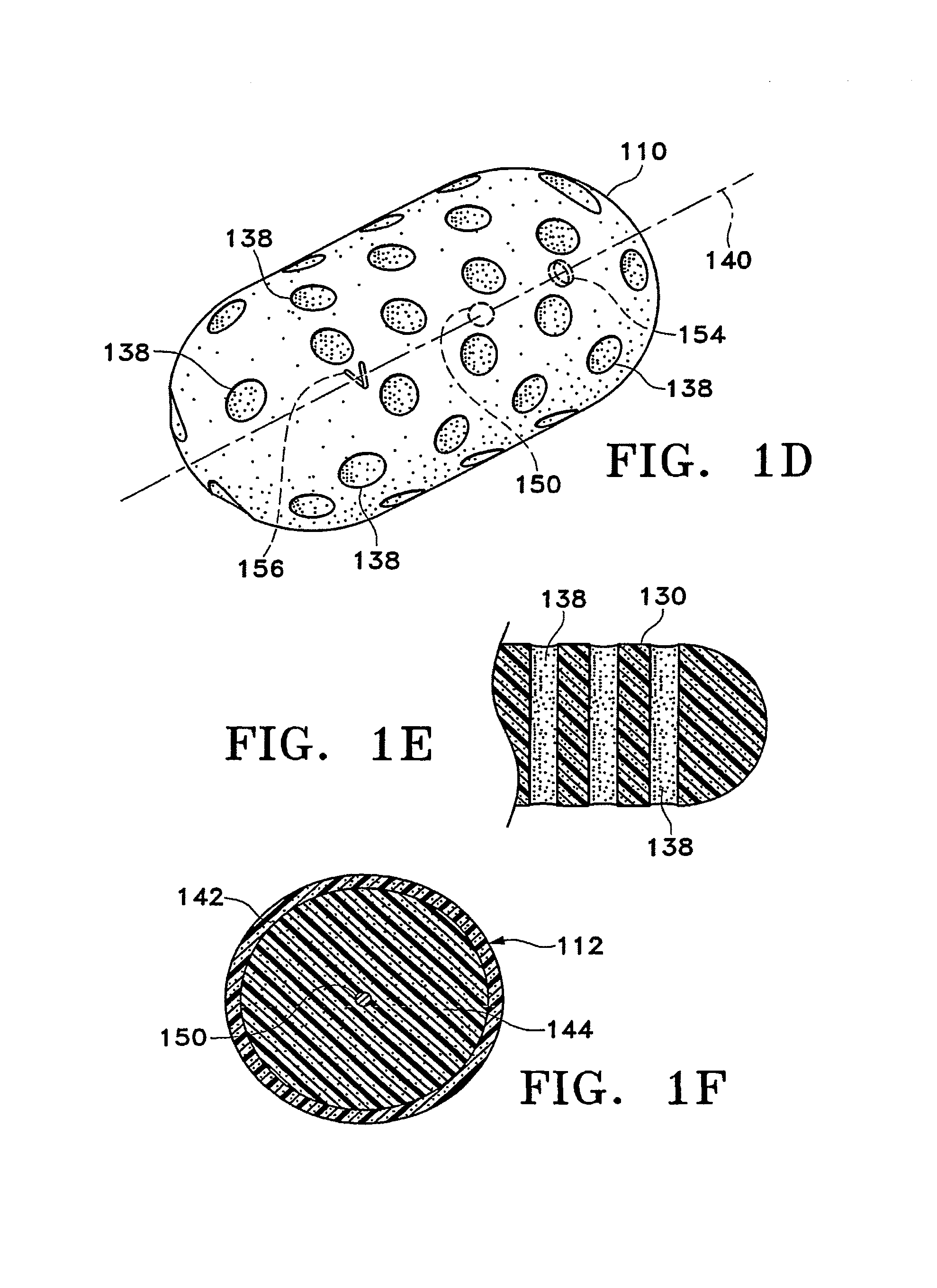Device and method for safe location and marking of a biopsy cavity
a safe location and biopsy cavity technology, applied in the field of biopsy cavity safe location and marking devices, can solve the problems of hemostatic material and sponge configuration, and achieve the effect of minimal invasiveness
- Summary
- Abstract
- Description
- Claims
- Application Information
AI Technical Summary
Benefits of technology
Problems solved by technology
Method used
Image
Examples
Embodiment Construction
[0091]The following illustrations are examples of the invention described herein. It is contemplated that combinations of aspects of specific embodiments or combinations of the specific embodiments themselves are within the scope of this disclosure.
[0092]FIGS. 1A-1M show various configurations of a preferred subcutaneous cavity marking device of the present invention. Here the marking device 100 is displayed as having either a generally spherical body 102 (FIG. 1A), a generally cylindrical body 104 (FIG. 1B), or a multi-faced or irregular body 106 (FIG. 1C). In general, it is within the scope of this invention for the body to assume a variety of shapes. For example, the body may be constructed to have substantially curved surfaces, such as the preferred spherical 102 and cylindrical 104 bodies of FIGS. 1A and 1B, respectively. The body may have conical or ellipsoidal, etc. shapes as well. It is further within the scope of this invention for the body to have substantially planar surf...
PUM
 Login to View More
Login to View More Abstract
Description
Claims
Application Information
 Login to View More
Login to View More - R&D
- Intellectual Property
- Life Sciences
- Materials
- Tech Scout
- Unparalleled Data Quality
- Higher Quality Content
- 60% Fewer Hallucinations
Browse by: Latest US Patents, China's latest patents, Technical Efficacy Thesaurus, Application Domain, Technology Topic, Popular Technical Reports.
© 2025 PatSnap. All rights reserved.Legal|Privacy policy|Modern Slavery Act Transparency Statement|Sitemap|About US| Contact US: help@patsnap.com



